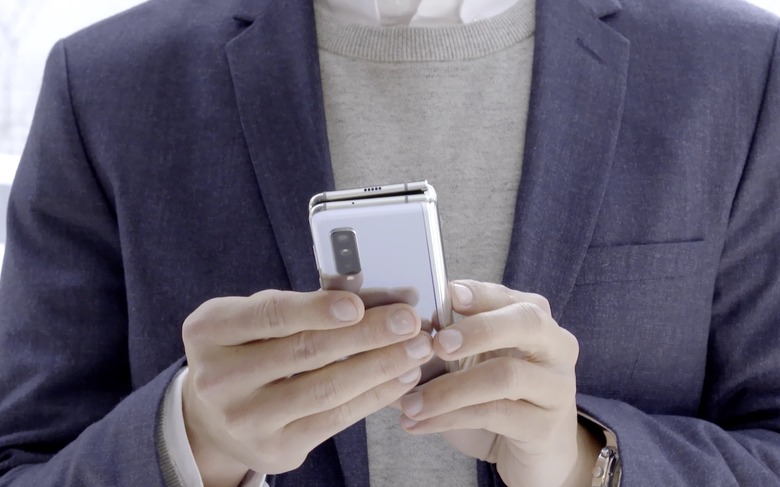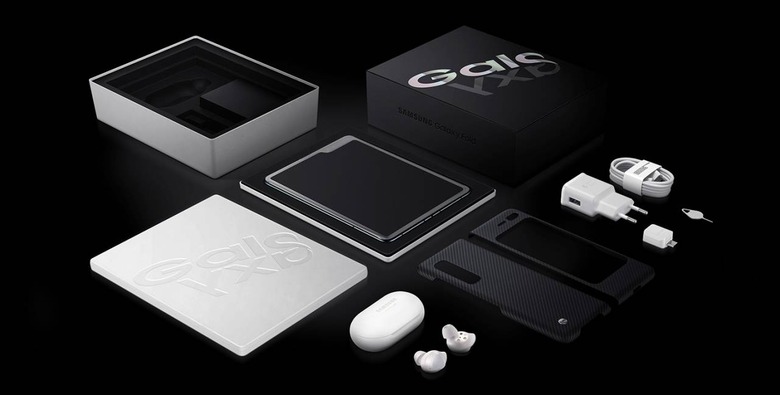Samsung's Fixed Galaxy Fold Is Reportedly Ready. Are We?
Samsung has reworked its flawed folding smartphone, and according to the leaks the Galaxy Fold is ready to take a second attempt at launching: question is, are we ready? The clamshell Android was to be Samsung's 2019 flagship, a triumphant demonstration that – despite lawsuits and criticisms from rivals – the South Korean firm is a true innovator in the space.
Instead, Samsung found itself with a PR nightmare. Mere days before the Galaxy Fold was meant to ship out to preorder customers, each of whom had spent a whopping $2,000 on the device, reviewers' phones started failing.
Screens cracked. Hinges left noticeable bumps in the folding display. A vital plastic top layer to the flexible OLED panel looked so much like a cheap, temporary screen protector, that reviewers understandably tried to pull it off.
Samsung recalled all the demo units and put the launch on ice, unsurprisingly prompting questions as to whether the hardware was ever ready for commercial release. Since then, blame has been apportioned and reasons for the failure have been shared. According to the latest reports, the reworked hardware is ready to go.

With reviewers acting as guinea pigs, Samsung has apparently fixed its more obvious flaws. The protective film has now been extended to more thoroughly wrap the Galaxy Fold's bezels, Bloomberg's sources say, while the hinge has been pushed up. Both are intended to leave the top layer looking more like an integral part of the OLED, rather than an afterthought.
The hardware may be ready, but it's unclear if the market is. Foldable phones faced skepticism from the outset, with potential customers questioning not only the Galaxy Fold's price but its purpose. For all the arguments that it would squeeze a tablet-scale screen into a phone-sized package, the chunky result – and the absence of apps that really make the most of such a form-factor – meant the new Samsung was already going to arrive to a critical audience.
Then again, Samsung has faced adversity in the shape of public mockery before, and survived it. The Galaxy Note 7 debacle still leaves the Korean firm the butt of exploding phone jokes, years after the recall took place. All the same, the Galaxy S10 was one of the most eagerly-anticipated devices of 2019, and the Galaxy Note 10 looks set to generate the same furious interest ahead of its August 7 debut.

If there's a difference, it's that the Note series was a known quotient. Samsung created the phablet category – indeed, all signs pointed to it hoping to repeat that feat with the foldables category – and the Note was a sales behemoth. The sheer difficulty the company had in prizing the last of the Note 7 out of owners hands, pockets, and purses – despite the fact that the phone was known to literally explode – was evidence of just how deep that loyalty ran.
The Galaxy Fold has had no such opportunity to win over skeptics and build a reputation. Even had this first-generation phone launched as planned, its price and the early nature of software designed for varying screen sizes meant that initially it was only ever going to be a rare plaything of richer users. New tech takes time to trickle down into the mass market and, like a river carving out a valley, find its groove.
I don't believe it's game over before it even got started for the Galaxy Fold. Samsung clearly doesn't, either. Not only is it working on this first iteration for an eventual release – not that it's saying quite when that will happen, mind – it's also believed to have at least one more Fold already designed. Even were Samsung to tarry, competitors like Huawei are preparing their own assaults on the fledgling segment, too.
Samsung may be ready. The Galaxy Fold may be too. But the challenge of convincing the rest of us that we're ready for the phone – and for foldables in general – is only just beginning.
